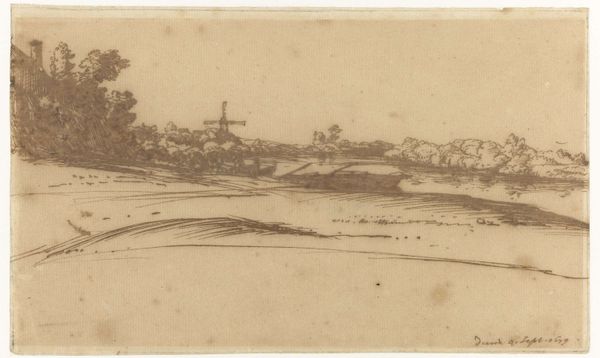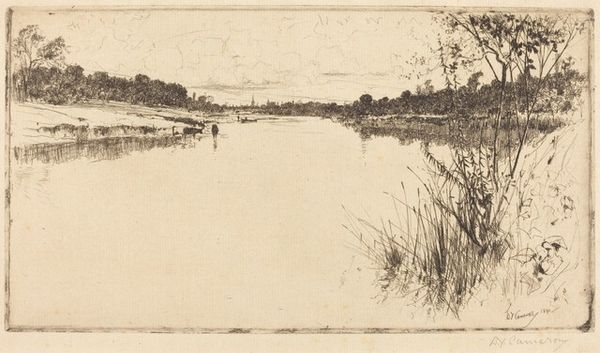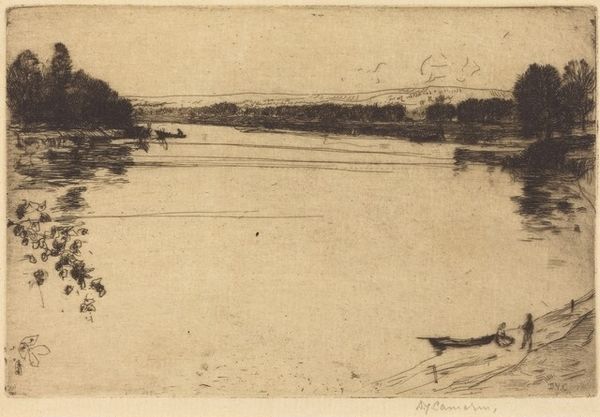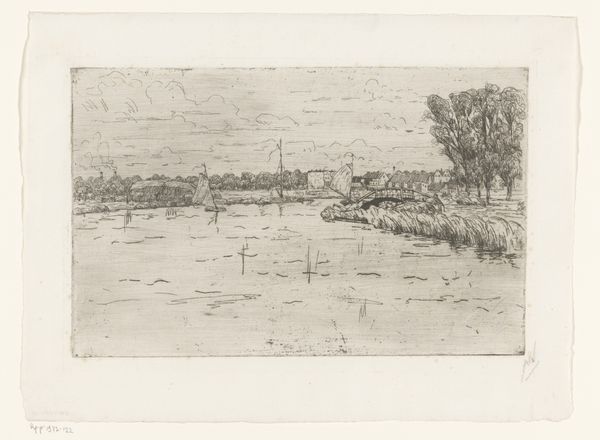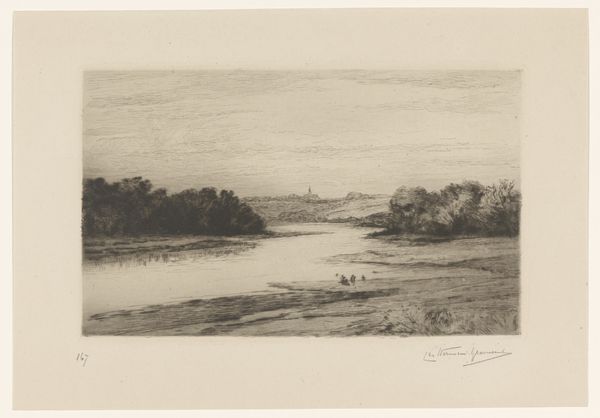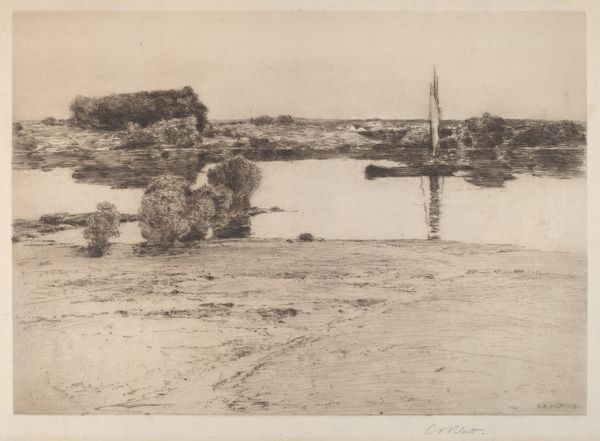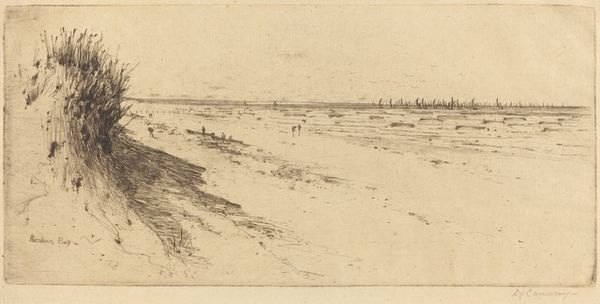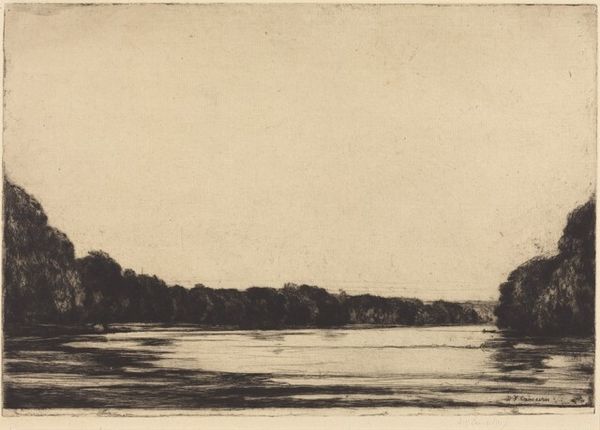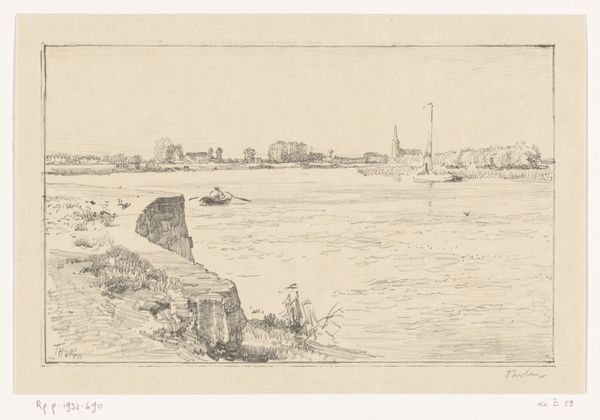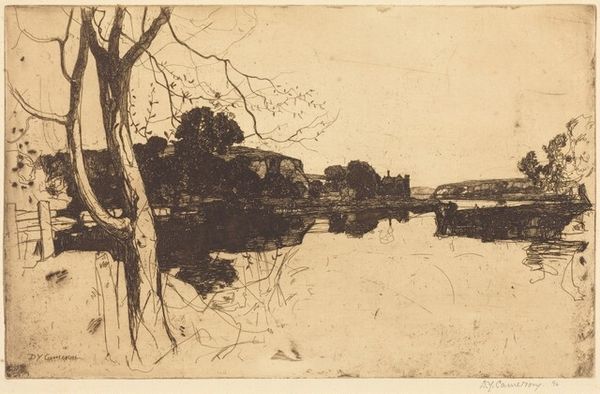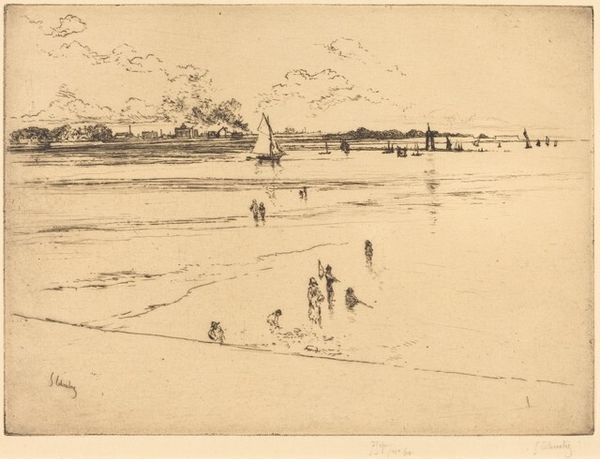
print, etching
# print
#
impressionism
#
etching
#
landscape
#
etching
#
realism
Copyright: National Gallery of Art: CC0 1.0
Curator: Welcome. Today we’re looking at “Tweedside,” an etching by David Young Cameron, completed in 1890. Editor: It's so quiet, almost melancholy. The landscape stretches far back, and the reflections in the water add to the feeling of stillness. What strikes you formally about its composition? Curator: The tonal range is masterful for an etching, creating a depth and luminosity that’s quite evocative. Observe how Cameron uses the etching technique itself – the cross-hatching and varied line weights – to suggest atmospheric perspective. It pushes the surface and bends the implied shape of what it should represent. Editor: Etching as a process involves a certain labor. Thinking about it, the bitten lines, the time spent with the acid... There’s a collaboration there, between artist and material, and the unpredictability would definitely shape the final piece. Was Cameron part of any artistic movements at the time exploring materiality? Curator: Cameron was closely tied to the British Etching Revival, aligning him with artists keenly interested in the inherent qualities of the printmaking process itself. The manipulation of the plate to achieve desired effects – like the soft, blurred sky versus the sharp details near the shore – reveals a conscious control of the medium's potential, a conscious emphasis of it in the finished work. Editor: And consider the river, Tweedside, as a working landscape – people transporting goods or fishing. The quietness of the scene belies the industrial aspects and daily labors associated with the area. You could make tools there... Curator: It's fascinating how you’ve brought out the intersection of the industrial and idyllic. I think it enriches our understanding to look at Cameron's other work. He often imbued landscapes with a sense of monumentality, which relates formally to the scale and balance found here. Editor: To circle back to its somber and muted mood, paying attention to how these landscapes function reveals how people exist alongside it. Curator: I appreciate that reflection – it gives "Tweedside" an anchor and reminds us about all aspects that affect what we’re experiencing here in the print itself.
Comments
No comments
Be the first to comment and join the conversation on the ultimate creative platform.
